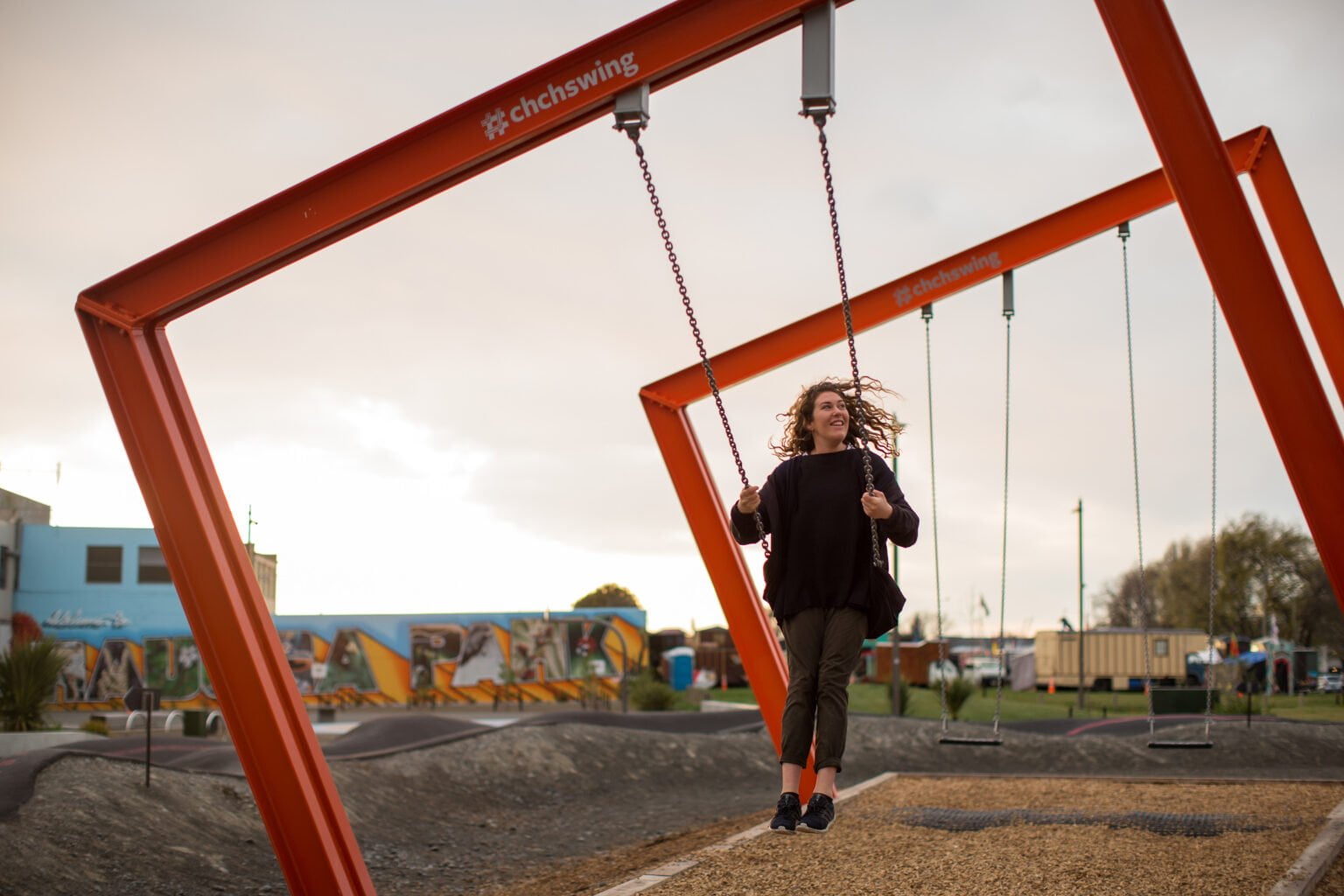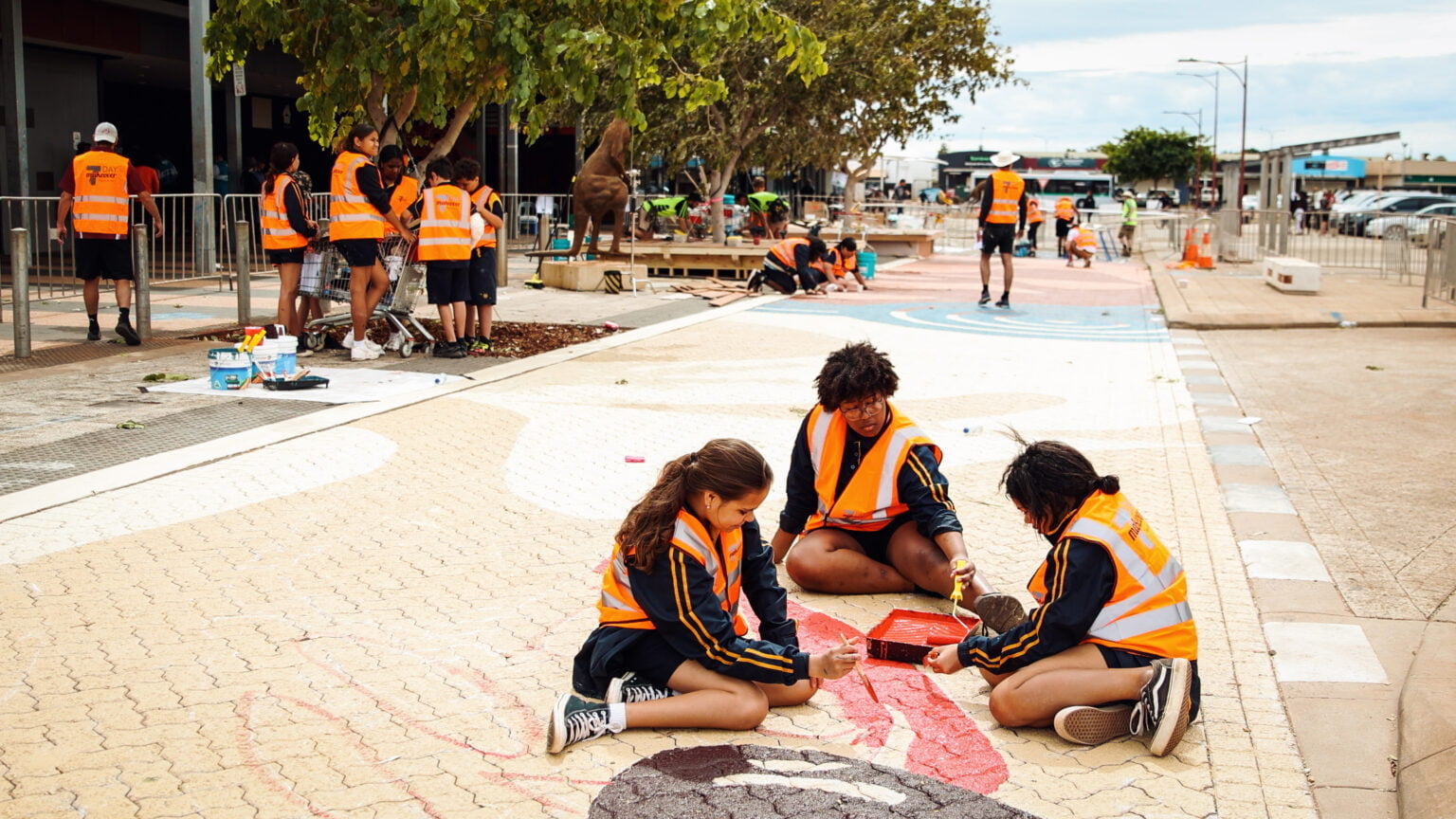In the second instalment of this two-part interview, Fae Sarshoghi and Joanne Taylor tackle the role of government, with topics ranging from urban governance to recent urban policy reform, urban design quality, the creation of inclusive spaces, and how to create long-lasting impact in a shifting political landscape.

Urban governance encompasses the regulatory, legislative and policy environment that guides decisions and strategies for implementation. It covers the entire spectrum of the regulatory environment right down to the management of specific places. It provides an overarching structure through which place management, place activation, and various local policies and strategies are administered and coordinated.
This interview covers the role of government in inclusive placemaking, with a focus on urban governance, the development and implementation of urban policies, achieving urban design quality and creating inclusive spaces. Also see part 1 – Inclusive placemaking: the role of governance.
Fae: How does the government structure in Australia influence the development and implementation of urban policies and strategies?
Joanne: In Australia each tier of government – federal, state and local – has its own set of policies, strategies, regulations, and often legislative acts that guide operations and determine respective responsibilities.
At the federal level, there has been a recent shift, with the Albanese Labor government committing to developing the first comprehensive National Urban Policy in over a decade. This is the second national-level urban policy reform overseen by Anthony Albanese. In 2011 he was responsible for the “Our Cities, Our Future” National Urban Policy as the Minister for Transport and Infrastructure. This was a long-term framework to guide policy development and public and private investment in cities. It canvassed policy options for creating a productive, sustainable and liveable future in major urban centres. The 2011 National Urban Policy and the National Urban Design Protocol were two very significant pieces of work by a federal government that supported a national and sustainable approach to urban development and policy.[1]The Liberal party abolished the Major Cities Unit in 2014.
The Albanese Labor government has demonstrated that it understands the importance of a national urban policy to effectively address planning and manage the challenges of our cities in a coordinated way. The most recent federal budget introduces several key initiatives. One is the Thriving Suburbs Program, with an allocated budget of approximately $200 million. Another is the Urban Precincts and Partnership program, with funding of around $150 million, which builds on the success of the Regional Cities and Partnership Program announced in October 2022.
The establishment of the Urban Policy Forum is another positive step, where leaders will contribute expertise to shape urban policy. This kind of collaborative work at the federal level is particularly exciting as it can have far-reaching effects, benefiting all states and territories.
Though it is only early days, the structured approach taken by the government is commendable and holds significant promise for the future. Such initiatives will play a crucial role in driving positive changes in urban planning and development across the country.
Can you elaborate on the potential impacts of the recent decision by the NSW Government to abolish the Greater Cities Commission and repeal the act? What role did this agency play in addressing social injustice, promoting urban design quality, and creating inclusive places?
In recent years, NSW demonstrated commendable progress, particularly with the establishment of the GSC (Greater Sydney Commission) in 2015, which also marked a shift towards decentralisation after a period of deep centralisation. The GSC was later renamed the Greater Cities Commission (GCC) to reflect the expansion from three Greater Sydney cities to a city region of six.
The GSC was a pioneering step in metropolitan governance, introducing a holistic model of policy management, guidelines, cross-sectoral partnerships, and a whole-of-government approach. While the commission received mixed feedback, I believe it served as an exemplary overarching model. The GSC, and later the GCC, was dedicated to building well-rounded places, much like the New South Wales Government Architects Office. It fostered inclusive planning, management, and design of places by having an independent organisation with a dedicated Social Commissioner focused on social outcomes.
Initially situated within the Planning department, the Greater Cities Commission later moved to the Premier and Cabinet Office, and then to the Transport and Infrastructure cluster. Recently the Commission was dismantled and the Act was repealed. The current NSW government has a strong focus shift to housing, adopting a more centralised approach that appears to emphasis input-output measures. The need for more housing is undeniable, but it’s important to recognise that housing exists within a larger system and in the context of place, civic offerings, and holistic outcomes.
There are concerns that the new approach may prioritise an input-output model over an outcomes model and preference siloed thinking over a whole-of-government approach. It remains to be seen how this shift will impact the inclusiveness, urban design quality, and social justice considerations that were being addressed by the previous positioning.

There is obviously a pattern of one government investing in creating an important agency, like the GCC, Major Cities Unit, or a policy piece like the National Urban Design Protocol, and then the next government diminishing it. Is there any way to overcome that challenge with a bottom-up approach to protect our cities against those changing decisions?
This is a complex and important question. In my view, a balanced approach that combines both top-down and bottom-up planning is crucial for achieving real impact. Excessive top-down control without bottom-up participation can lead to exclusionary governance, while an over-emphasis on bottom-up planning may neglect ministerial areas and decision-making authorities. We need a symbiotic relationship, where a top-down approach creates an enabling environment for bottom-up voices to emerge and influence decision-making processes.
This highlights the significance of independent statutory authorities, such as the Greater Cities Commission, in urban governance. These bodies typically can be insulated from the influence of changing governments through the protection of an Act. However, in the case of GCC, even the Act wasn’t a strong enough measure to protect it from abolishment. A protection measure that enables the body to provide impartial advice on managing and governing our cities is imperative A good example is Infrastructure Australia, which has remained as an independent advisor across different political cycles, ensuring consistency and long-term impact. Engaging the private sector is also crucial, as it is less susceptible to election cycles. Collaboration between independent bodies and private stakeholders can enhance the resilience of urban governance.
It is important to acknowledge that these approaches go through phases and can vary across states and governments. For instance, South Australia previously demonstrated strong advocacy for holistic places but experienced a shift towards an asset-focused model under a different government. This narrow focus on assets often prioritises financial outcomes without considering broader social and sustainability impacts. Conversely, NSW has had a strong emphasis on place-focused strategies, ACT has strong place approaches embedded in government agencies with advocates such as Suburban Land Agency and City Renewal Authority, and Western Australia is currently showing increased interest in whole-place thinking and systems approaches. Thus, the emphasis on place outcomes can fluctuate between states and over time.



How does the concept of placemaking values rise above political systems and contribute to the creation of meaningful urban environments?
The concept of placemaking values often rise above political systems due to its intangible and subjective nature. It is about creating meaningful urban environments which focus on people and their connection to place. Despite the complexity of our urban landscapes, there is a deep-rooted understanding of the importance of embedding our values in these spaces. Inclusivity, diversity and equity play essential roles in shaping our cities.
Although political cycles may sometimes delay progress, we must navigate them to bring about incremental change. Progress may involve steps forward and backward, but overall, there is advancement. NSW has made significant strides in their approach to placemaking, demonstrating a shift in thinking about urban spaces. It is important to recognise that the influence of this thinking and practice persists in the political system, whether people are in the Greater Cities Commission or within the Planning Department.
What is the role of state level policies such as “Better Placed” in NSW or the “Government as a Smart Client” guidelines in Victoria in promoting inclusivity in our public places?
These state-level policies and guidelines are very beneficial as they provide support to councils and other organisations in delivering their outcomes. While they are not legally binding regulations or legislation, they offer exceptional guidelines and principles into best practices.
Better Placed came from the Government Architect NSW (GANSW) and is an exemplary resource on integrated design thinking for the built environment. One notable aspect of the Better Placed policy is its role in supporting inclusive design, equitable outcomes and liveability. It is a powerful piece of work that demonstrates a deep understanding of how design and place function in an integrated manner.
Can you explain place-based approaches and how do they work with or around the regulatory constraints?
A place-based approach involves incorporating community values into the design process to create a collective vision and deliver place outcomes that function effectively at all levels, including the organisation’s operations and delivery processes.
Place-based approaches encompass mindsets, methods and ways of working that can have an impact on both the outcome and the organisation responsible for delivering it. These approaches do not need to circumvent regulations; instead, they can drive the vision while working in conjunction with regulations. Regulations are necessary for various reasons, and place-based approaches assist organisations in operating, managing themselves, connecting with community and achieving desired outcomes.
This brings to mind a conversation I had with the late John Mant AM, a lawyer and town planner who was instrumental in reforming the NSW Local Government Act. He emphasised that you could gain insight into how a local government organisation operates by observing its on-the-ground delivery of urban design. A disconnected and siloed operation is evident in the way urban outcomes are delivered, as quite often they mimic the same disconnected thinking. For instance, if a developer constructs a building, and then the local council takes charge of delivering the pavement or civic space, followed by involvement from local businesses, the lack of communication and coordination between these entities could result in a disjointed outcome.
What measures can be taken at the state and local levels to ensure that national-level strategies and policies effectively translate into the development and creation of places that cater to the needs of communities?
At the national level, we have policies that provide guiding principles and outline best-case scenarios. Implementation of these policies primarily rests with individual councils, as they are the ones responsible for formulating strategies and plans for local areas. These councils may refer to, use and adopt the national policy as part of their approach. The main focus is on state and local levels adopting national-level strategies, allowing for integration of policies into their own strategies.
The Urban Design Protocol was highly effective back in 2011, as many councils referred to it in their place plans or place strategies. This demonstrates one way that the national level can influence decisions at the local council and state levels.

We know that time, money and capacity can be a challenge in community-led initiatives. What support can the government provide to the less fortunate communities who may not have the resources available to them on a voluntary basis?
There are significant opportunities to build capacity through training in community initiatives. However, a common challenge is that voluntary community involvement often has a limited timeframe, with people becoming fatigued or losing interest after one or two years. This may be particularly the case for under-represented groups, those not currently working, or carers at home. While they could provide valuable support, I am not a strong advocate for relying solely on voluntary work from these groups.
To ensure sustainability, it is crucial to establish models that incorporate governance and financing. Funding is essential for community success, and it should not solely rely on volunteering and goodwill. Creating sustainable models involves recognising the importance of financial instruments to support the community’s goals for better outcomes.
On an innovative level, even when funding is not available, training or capacity building could be received to facilitate an exchange in value. This helps build social capital by recognising the value of contributions, volunteering and championing within the community. In turn, this leads to a more sustainable model.
Financing is a significant aspect, and there are models, such as community trusts, which support financial sustainability. For example, community trusts buying and managing their assets can be effective financial models. While some might be hesitant about implementing legal structures, I am supportive of their use if they contribute to long-term sustainability. Having such instruments in place is essential for community-focused initiatives.

Joanne Taylor is the Principal of Cities at WSP. She is a senior leader with a focus on creating inclusive, sustainable and equitable communities. Joanne is an expert in evidence-based research, emerging technologies, and place governance. She holds a Masters of Architecture from the University of Technology Sydney and possesses an extensive experience in co-design, cross-sector partnerships, and program delivery. Joanne is equipped with multiple years’ experience in industry, including as CEO of Place Leaders Australasia. She operates at the intersection of research, policy and practice, driving contemporary methods for liveable communities.
Fae Sarshoghi is passionate about the interrelations of architecture and social sciences, with a focus on social sustainability and inclusive placemaking. Fae was born in Iran and spent much of her life there, where she practised interior design. Coming to Australia a decade ago, Fae worked in the interior fit out space for a few years and then started pursuing her passion in urban design while working on wayfinding and placemaking projects. Fae excels in analysing spaces holistically, integrating innovative practices into projects. Currently studying her Masters in Urban Design at University of Technology Sydney, her ultimate goal is to transform cities into harmonious and inviting spaces, where everyone feels connected, valued and welcome, while fostering a positive impact on the environment.




















